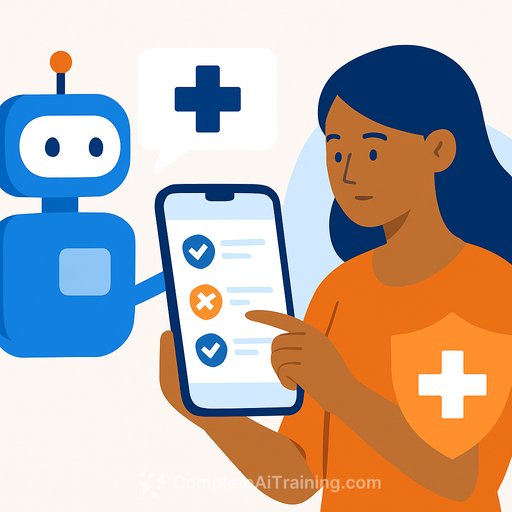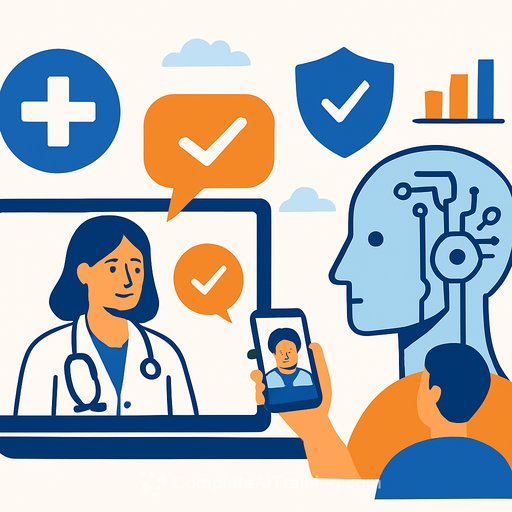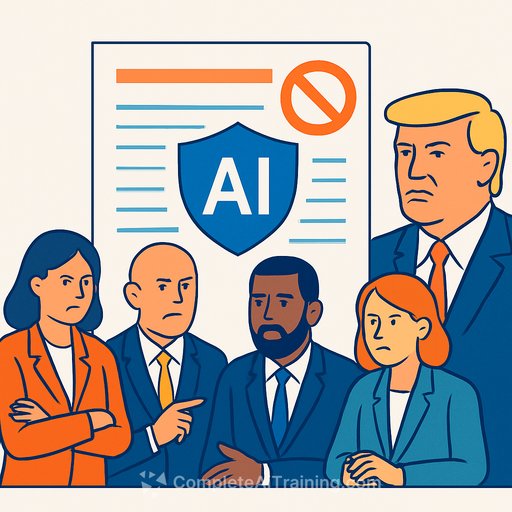Gen Z Is Letting AI Pick Their Health Plans - What Insurance Pros Should Do Now
Older Gen Z and the youngest millennials are outsourcing health plan selection to AI. A Justworks survey with The Harris Poll shows 62% of "zillennials" have used AI tools to choose a plan, and many would rather trust the tool than go it alone.
For insurance professionals, this isn't a novelty trend. It's a signal: clients expect simple, fast, and confident answers. If your process can't deliver that, AI will fill the gap - with mixed results.
Why This Trend Matters
Health plan selection still feels confusing for first-time buyers. Over half of Gen Z adults (55%) say they don't know much about choosing a plan, and 44% of zillennials admit they don't put much thought into the choice.
Experts agree the confusion is less about reading skills and more about policy design and cost mechanics. As one instructor put it: AI can compare multiple plans and explain trade-offs in plain language - something most plan docs fail to do.
The Data At A Glance
- 62% of zillennials used AI to help choose a plan (Justworks + The Harris Poll; 4,000+ U.S. adults).
- 21% of zillennials don't feel confident picking a plan.
- Confidence gap: 29% of Gen Z vs. 17% of millennials report low confidence.
- 55% of Gen Z say they've never had to pick a plan before.
- 44% of zillennials say they don't put much thought into their plan decision.
What Experts Are Saying
"Health literacy, even among educated Americans, is low… AI can take multiple plans and explain them in a way that resonates," said Alex Beene. Chris Fong notes AI is strong on the objective side (benefits and coverage) but weak on the subjective side (brand trust, past claims experiences, family history).
Kevin Thompson calls AI the "easy button," but warns poor inputs lead to poor choices. Users may end up with higher out-of-pocket costs or pay more in premiums than needed.
The Risk You Need To Manage
Generic AI outputs can miss critical factors: chronic meds on a non-preferred tier, a key provider out of network, or a deductible/coinsurance mix that blows up total cost under realistic care events. The result: undercoverage masked by a low premium - or overpaying for features the member won't use.
Your edge: bring guardrails, better data, and scenario math that consumer chatbots won't.
Playbook: Make AI Work For You (And Your Clients)
- Collect better inputs: medications (name/dose), providers, expected services, ongoing conditions, maternity plans, mental health needs, and risk tolerance for OOP swings.
- Build a "total cost" view: premium + expected OOP under 3 scenarios (low, typical, high utilization). Show breakeven points for HSA-qualified HDHP vs. copay plans.
- Wire real data: formulary tiers, network participation, prior auth rules, and plan exclusions. Don't rely on marketing PDFs.
- Add the "subjective" layer: carrier reputation, claims service history, local provider experience, and prior denials that matter to the family.
- Use AI with guardrails: let it summarize options and flag mismatches, then have an advisor validate key items (providers, meds, OON exposure, MOOP).
- Standardize explanations: plain-language summaries of deductible, coinsurance, MOOP, and common traps (ER vs. urgent care, imaging costs, specialty Rx caps).
- Document the rationale: inputs received, plans compared, why the final pick fits the client's usage profile.
- Set expectations: AI is a second opinion, not the decision-maker. The advisor owns the recommendation.
Advisor Scripts That Land
- "Low premium doesn't mean low cost. Let's look at your likely care, then compare total cost under each plan."
- "Your providers and meds drive 80% of the decision. We'll confirm both before we talk price."
- "If you expect X visits and Y meds next year, this plan breaks even at month 7 - after that, you save."
- "AI is helpful for options. We validate with real network and formulary data so there are no surprises."
Fast Checks Before You Recommend
- Provider match: PCP, key specialists, hospital system in-network?
- Rx reality: tier, prior auth, step therapy, specialty carve-outs, annual caps?
- High-cost events: maternity, imaging, outpatient surgery - coinsurance and facility fees modeled?
- MOOP sensitivity: can the member handle the worst-case cash impact?
- Tax angle: HSA eligibility, employer contributions, and realistic HSA funding behavior.
Useful References
Survey partner: The Harris Poll
Plan comparison basics: Healthcare.gov: Comparing Plans
Upskill Your Team On Practical AI
If you're building AI-assisted workflows for client intake, plan comparisons, and education, level up your team's skills here: Complete AI Training - Courses by Job.
Bottom line: Consumers will keep asking AI for quick answers. Make sure your process delivers speed with accuracy - and your advice remains the difference between a cheap premium and the right coverage.
Your membership also unlocks:






